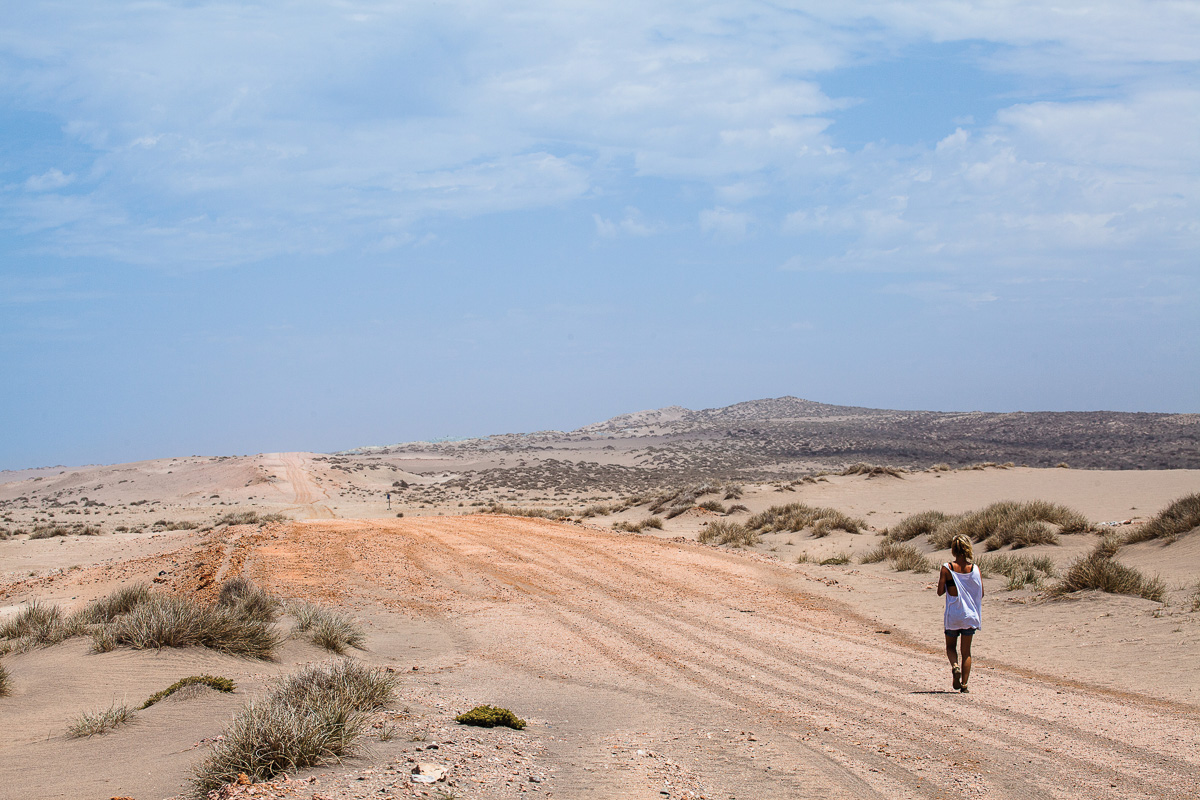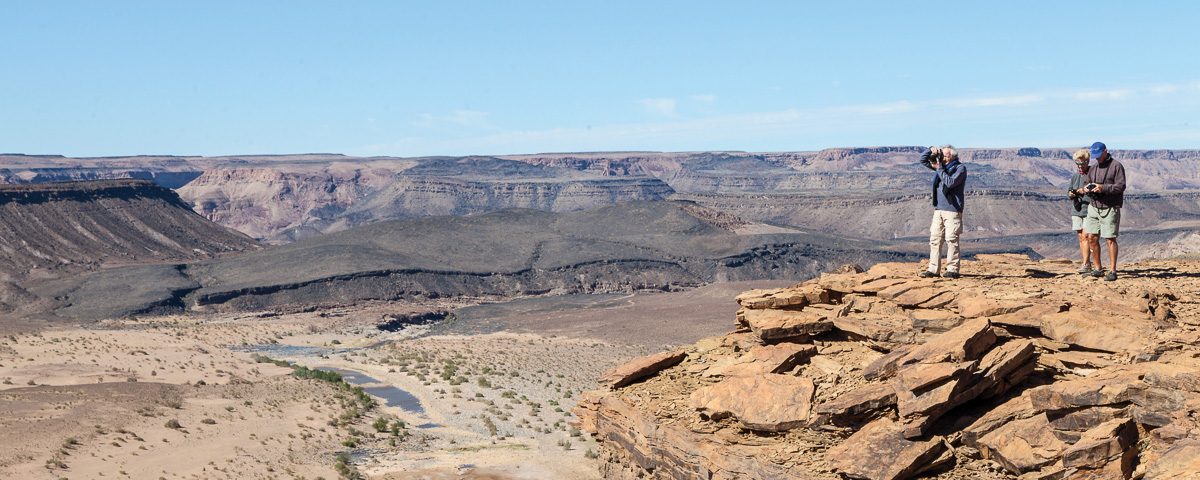
10 Ways to be a Green Traveller
November 5, 2019
Most Instagrammable Namibian Places
November 8, 2019To experience Namibia is a lot more than just seeing the sights and getting a quick photo to post to Instagram and prove to the world that you’ve been there. It is about experiencing the warmth of the people, the wide-open spaces and beautiful sunsets. Here are ten truly Namibian experiences you have to have.
1. BALLOON TRIP OVER THE NAMIB
Peacefully float over the oldest desert in the world in a hot-air balloon as the early morning sun transforms the Namib landscape with different hues of red and orange. Allow the desert vista of mountains, dunes and huge plains to take your breath away while you try to fathom the beauty of this harsh country. Keep an eye out for the mysterious fairy circles that are dotted across the desert grasslands as the crisp morning air pushes the balloon across the ever-changing scenery.
2. VISIT THE BOGENFELS ROCK ARCH
Experience a day trip deep into the heart of the Sperrgebiet, the restricted diamond area that surrounds Lüderitz, and visit the impressive Bogenfels rock arch (55 m high). Carved out over centuries by the rough seas below, it resembles a bridge that takes you from the mainland into the unknown of the cold Atlantic Ocean. Seeing the colossal rock arch in real life is truly impressive as photographs cannot capture its sheer size.
3. VISIT THE ICONIC DEADVLEI
One of the most photographed places in Namibia and with good reason: Deadvlei close to Sossusvlei is any photographers dream. Deadvlei was formed centuries ago when the flood waters of the Tsauchab River created ideal conditions for camel thorn trees to grow. The changing climate then killed the trees, leaving a white pan surrounded by dunes and the ghost-like remains of the dead tree trunks. The contrast of the stark white pan, the dark shapes of the trees, the red dunes and blue sky has tourists flock to Deadvlei all year round.
4. WANDER THROUGH THE GHOST TOWN OF KOLMANSKOP
The decadence that came with the diamond rush in the south of Namibia at the beginning of the 1900s is spectacular. The discovery of diamonds near Lüderitz brought ships full of fortune seekers and caused an unsustainable economic boom. A town called Kolmanskop was established close to where the diamonds were mined. Using the diamond money to build mansions for themselves, the wealthy inhabitants of the town lived in utmost luxury. The start of the First World War, however, brought an end to this brief period of prosperity. Today all that is left is a ghost town. Walking through the abandoned buildings you can only imagine what life must have been like here a century ago.
5. WONDER AT THE ENIGMA OF THE WHITE LADY
Discovered in the Brandberg Mountain in 1918, the White Lady rock painting has puzzled numerous intellectuals over the years, creating different theories about its origin and what it depicts. A widely believed theory was that it portrays a woman and was done by travellers from the Mediterranean visiting the area some 2000 years ago. This is due to the white figure depicted in the painting believed to be similar to female figures in the bull-leaping fresco in Knossos, Crete. Today, however, the prevailing theory is that the “lady” actually represents a shaman with white body paint. Visit the rock painting and decide for yourself.
6. TAKE A PHOTO WITH THE WORLD’S LARGEST METEORITE
In 1920 a farmer was ploughing a field on his farm Hoba West, when his plough struck an obstacle. Curious as to what caused the sudden halt he started digging and unearthed the world’s largest meteorite! Named after the farm on which it was found, the Hoba Meteorite weighs a whopping 66 tons. Its weight doesn’t come as a surprise as it consists of 84% iron and 16% nickel. Scientists believe that the meteorite fell to earth some 80 000 years ago. Although excavated, it has never been moved due to its massive weight and can be seen in the very spot where it fell.
7. BE AMAZED BY THE FISH RIVER CANYON
The Fish River Canyon is the world’s second-largest canyon after the Grand Canyon in the United States. It was formed 500 million years ago when a combination of tectonic movement and water erosion slowly started to create the canyon as we know it today. At 160 km long, 27 km across at its widest point and more than 550 m deep, the Fish River Canyon is guaranteed to dazzle every visitor with awe-inspiring views.
8. SANDWICH HARBOUR: WHERE THE DUNES AND THE OCEAN MEET
Sandwich Harbour is renowned for its dramatic scenery of giant sand dunes that run straight into the Atlantic Ocean. It includes a bay in the north and a lagoon to the south. The protected wetlands of the lagoon are considered one of the most important in southern Africa due to the array of marine birdlife that it attracts. Situated 50 km south of Walvis Bay, the route to Sandwich Harbour can become tricky to navigate for inexperienced drivers, but luckily there are plenty of tour operators that visit this unique place.
9. DO THE WELWITSCHIA DRIVE
Endemic to Namibia and southern Angola, the Welwitschia mirabilis is quite a remarkable plant. It can live for many centuries and has only two leaves, although through weathering and animal disturbance it can appear to have an enormous tangle of leaves. A great way to see these plants is the Welwitschia Drive west of Swakopmund. It is estimated that on the Welwitschia plains through which the route goes, 6000 of these plants can be found. The main attraction is a giant Welwitschia at the end of the route. This plant is between 1000 and 1500 years old.
10. PLAY WHERE THE GIANTS WALKED
About 14 km northeast of Keetmanshoop a surreal landscape called Giant’s Playground can be found. Giant boulders stacked on top of each other like play bricks and strewn all over the place make it easy to imagine that once upon a time giants walked the earth and used this area as their playground. Created over millions of years of erosion these rock structures are one of Namibia’s many unique rock features.


